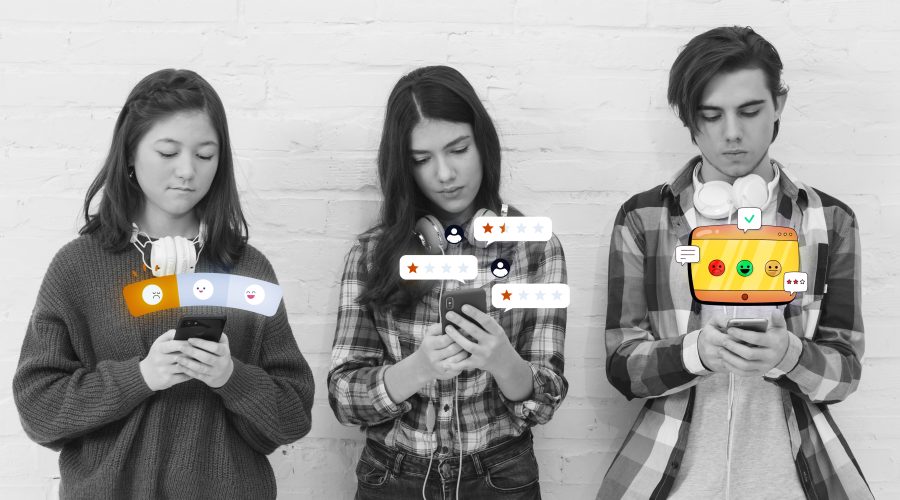The Impact of Social Media on How We View Different Countries
In a perfect world, you’d have an open mind when learning about other countries. You’d take in their unique cultures, savour their traditions, and explore new ways of thinking.
But in the age of social media, where we’re bombarded with sensationalised stereotypes and biased narratives, this kind of understanding gets muddled.
In this blog, we’ll explore how social media has shaped the way we view countries and how to navigate through these distorted portrayals to form a more authentic and well-rounded perspective.
Let’s get started!
What is the impact of social media on how we view other countries?
Social media has changed the way we interact with global cultures. Platforms like Instagram, Twitter, TikTok, and Facebook offer real-time access to the lives, traditions, and lifestyles of people from all over the world.
While this can broaden our understanding, it can also lead to misconceptions and stereotypes. The constant flow of images, videos, and posts creates an often fragmented view of foreign countries—one that is influenced more by viral trends and surface-level content than by in-depth analysis.
For example, South Korea is often portrayed on social media through the lens of its entertainment industry, particularly K-pop and K-dramas. Platforms like Instagram and TikTok highlight the glamorous world of K-pop idols, their fashion, and the global fan culture that has emerged around it.
However, this focus can obscure other aspects of South Korean society. For instance, the country has a rich cultural heritage with traditions such as hanbok, tea ceremonies, and festivals that go far beyond the glitzy image often seen online.
Additionally, South Korea faces its own set of social challenges, including high pressure on students, an ageing population, and economic inequality, which aren’t typically highlighted in the global social media portrayal.
How does social media differ from traditional media in shaping our views of different nations?
Traditional media—such as newspapers, TV news, and documentaries—typically involved curated, edited, and polished content produced by journalists with editorial oversight.
While traditional media outlets may still shape public opinion, social media has shifted this dynamic. Social media platforms are often decentralised, meaning that anyone with an internet connection can create and share content.
The informal nature of social media allows for more authentic and unfiltered portrayals of foreign cultures. However, it also means that misinformation can spread quickly, and sensational or biased content can gain more attention than balanced, factual reporting.
Why do people turn to social media to form opinions about foreign countries?
There are several reasons why people turn to social media when forming opinions about foreign countries. First and foremost, social media is easily accessible and offers a quick, bite-sized overview of global events and cultural trends.
For example, during times of international conflict, social media can provide immediate updates that are often more current than traditional media outlets.
Social media’s interactive nature also encourages engagement. People can comment, share, and even engage in debates about global issues, giving them a sense of participation in a broader conversation.
This level of interaction is something traditional media doesn’t offer, allowing people to form opinions not just through observation but through engagement.
What types of content on social media shape our perceptions of other countries the most?
On social media, different types of content influence how we view foreign nations. Some of the most prominent content categories include:
- Viral Memes: These often humorous, bite-sized snippets give us a fleeting glimpse into foreign cultures. However, viral memes can sometimes distort realities by focusing on extreme or exaggerated aspects of a culture, leading to oversimplified perceptions.
- Travel Vlogs: Travel bloggers often share their experiences in different countries, offering personal insights into local traditions, cuisine, and attractions. While these videos can provide a rich, detailed view of a destination, they may still carry a subjective lens, highlighting the influencer’s perspective rather than offering a comprehensive view of the country.
- News Clips and Social Movements: Social media allows citizens to share their voices, often in the form of live-streamed protests, rallies, or political discussions. These raw depictions of real-time events can paint a vivid picture of a country’s political climate but may not offer the full context of complex issues.
- Cultural Challenges: Platforms like TikTok popularise cultural challenges or dance trends that may come from specific countries. These viral moments can quickly introduce foreign cultures to a global audience but also reduce a nation’s diversity and complexity to trends or novelty acts.
How to Navigate Social Media for Accurate Cultural Representation
To gain a thorough and precise understanding of different countries and cultures, consider these strategies
1. Engage with Local Voices
One of the best ways to gain authentic insights into a country is by listening to the voices of its own people.
Seek out content from local bloggers, journalists, and influencers who are based in the country you’re interested in. They are more likely to provide an accurate representation of their culture, social issues, and daily life.
While travel influencers and foreign content creators can offer valuable insights, local voices can provide a deeper and more nuanced understanding that goes beyond superficial aspects of a culture.
2. Check Your Sources
The allure of viral content is strong, but not all viral videos or posts are rooted in truth.
Before forming an opinion or sharing information about a country, verify its authenticity. Use fact-checking websites, cross-reference with reputable news outlets, or look for sources that offer detailed context.
In particular, be wary of content that paints an entire country or culture based on a single, often sensationalised event. Understanding the full context is crucial for avoiding misinformation and building an informed opinion.
3. Look for Long-Form Content and In-Depth Analysis
While short, entertainment-driven social media content can be fun and engaging, it doesn’t always provide the depth required for a true understanding of a culture.
Long-form content such as documentaries, interviews with experts, or comprehensive articles often offers more nuanced insights. These sources take the time to explore a country’s history, politics, and society, providing a more well-rounded view than a viral video ever could.
Make a habit of seeking out content that educates you and challenges your perceptions rather than just entertains.
4. Be Critical of Stereotypes
Social media is rife with content that can inadvertently perpetuate stereotypes. This can be especially true in memes, viral videos, or even certain travel-related content that simplifies complex cultural practices or reinforces negative clichés.
When you encounter content that feels overly generalised or based on a stereotype, take a step back and ask yourself whether it accurately represents the complexity of the culture.
Challenge these assumptions by doing further research and consuming content that showcases the diversity and depth of the country.
5. Embrace Cultural Sensitivity
While engaging with content on social media, it’s essential to approach it with an open mind and cultural sensitivity. This means being respectful of traditions, recognising your own biases, and understanding that every culture is multifaceted.
Avoid treating a country or culture as a monolith based on the content you see online. Different regions, ethnic groups, and communities within a country can have vastly different ways of life, and social media often only scratches the surface.
6. Be Mindful of Your Own Biases
Finally, it’s important to recognise your own biases when consuming content. Social media platforms are designed to personalise your feed based on your interests, but this can lead to confirmation bias—only seeing information that aligns with your existing beliefs or perceptions.
Make a conscious effort to seek out content that challenges your perspectives and broadens your understanding. Engage in conversations with people from different cultures, ask questions, and keep an open mind as you explore.
Conclusion
While social media offers vast opportunities to explore different cultures, it also comes with the challenge of misinformation, oversimplification, and bias.
By using the tips mentioned above, you can better navigate the content you encounter and form a more accurate, nuanced, and respectful understanding of foreign countries.

